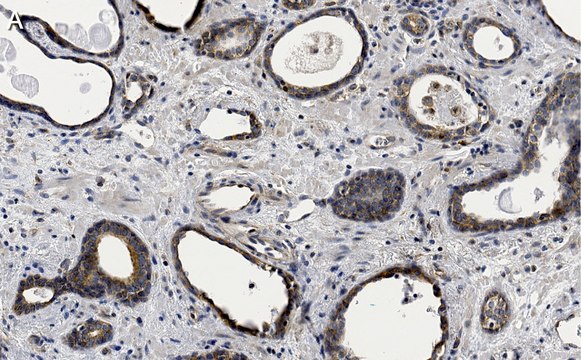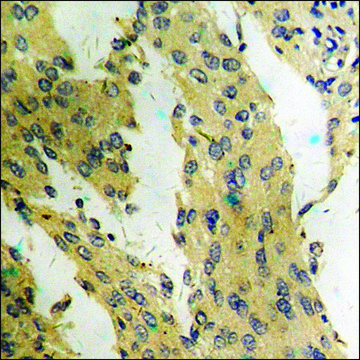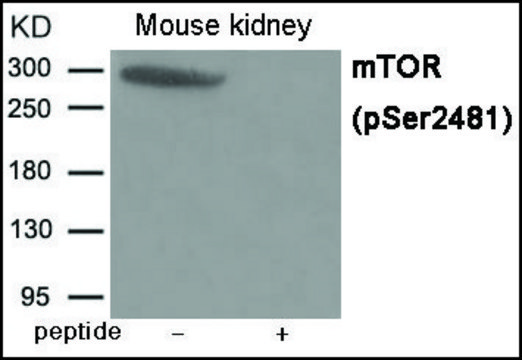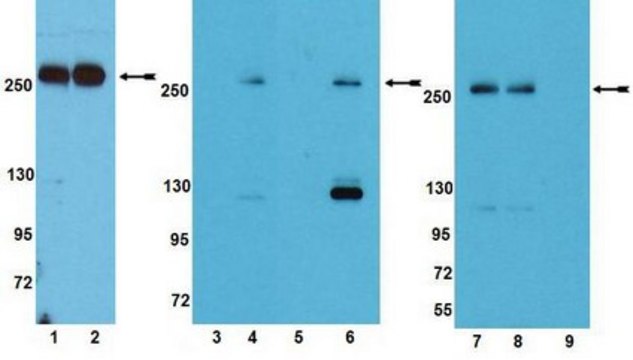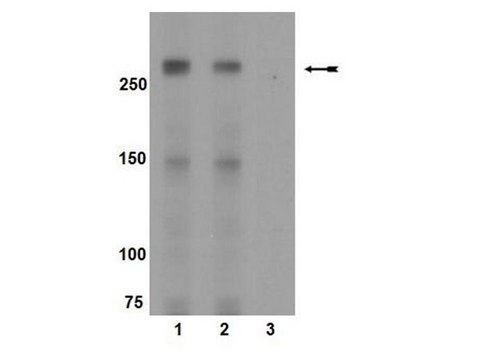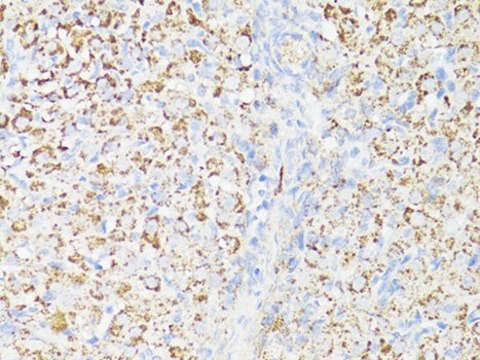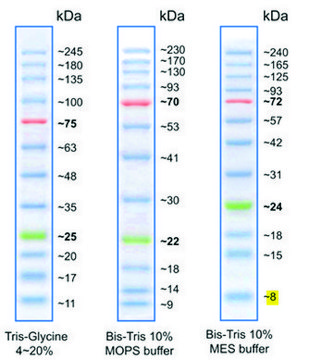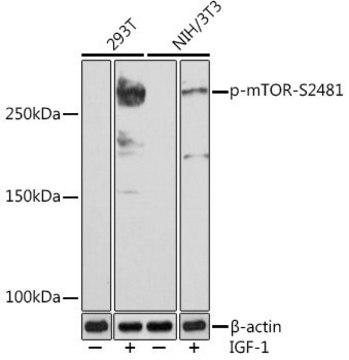General description
mTOR (Mammalian Target of Rapamycin, aka FRAP, RAPT or RAFT) is a large 289 kDa Ser/Thr protein kinase that regulates cell cycle progression, cell growth, protein synthesis, ribosome biogenesis, and autophagy. mTOR is an evolutionarily conserved member of the Phosphoinositol Kinase-related Kinase (PIKK) family whose activity is regulated by phosphorylation on Ser2448 by Akt in response to insulin or muscle activity. Interestingly, mTOR is the central component of two multimeric kinase complexes consisting of mTOR and numerous other mTOR binding proteins. These two multimeric protein complexes are designated mTORC1 and mTORC2. mTORC1 (mTOR Complex 1) consists of at least mTOR, Raptor, and GβL (mLST8). mTORC1 is known to play a central role in insulin signaling, which is crucial in maintaining metabolic homeostasis. The complex is activated primarily though the PI3 Kinase/Akt pathway. Upon insulin stimulation, Akt activates mTORC1 by phosphorylating and inhibiting TSC (and possibly other yet discovered targets and/or mTOR itself). This inhibits the upstream small GTPase regulator Rheb (Ras homolog enriched in brain). This inhibits the kinase activity of the mTORC1 complex, thus disabling its ability to phosphorylate its downstream targets such as p70 S6K on Thr389 and 4E-BP1 on Thr229. The other mTOR complex, mTORC2 (mTOR Complex 2), is made up of at least mTOR, Rictor, GL, Sin1, Protor 1 and 2. mTORC2 affects cell proliferation and survival primarily by phosphorylating the hydrophobic motif of Akt on Ser473, a well-known effecter of the PI3 Kinase pathway. In addition to phosphorylating Akt, the mTORC2 complex is also known to effect cytoskeletal organization and migration by exerting its effects through Rac, Rho, and PKC. Interestingly, unlike mTORC1, the mTORC2 complex appears to not be inhibited by treatment with rapamycin and for this reason is referred to as the rapamycin-insensitive complex. Defects in both mTOR complexes are associated with a variety of diseases, including cancer and diabetes.
Specificity
Predicted to cross react with mouse based on 100% sequence homology.
Recognizes mTOR when phosphorylated on Ser2481
Immunogen
Amino acids encompassing and including phosphorylated Ser2481 of human mTOR
Application
Detect phospho-mTOR (Ser2481) using this Anti-mTOR Antibody validated for use in WB.
Research Category
Signaling
Research Sub Category
Insulin/Energy Signaling
Glucose/Glycogen Metabolism
PI3K, Akt, & mTOR Signaling
Quality
Routinely evaluated by western blot on NGF-treated PC12 cell lysate.
Target description
289 kDa
Physical form
Purified rabbit polyclonal in buffer containing 0.1 M Tris-Glycine (pH 7.4), 150 mM NaCl with 0.05% sodium azide.
Storage and Stability
Stable for 1 year at 2-8°C from date of receipt
Legal Information
UPSTATE is a registered trademark of Merck KGaA, Darmstadt, Germany
Disclaimer
Unless otherwise stated in our catalog or other company documentation accompanying the product(s), our products are intended for research use only and are not to be used for any other purpose, which includes but is not limited to, unauthorized commercial uses, in vitro diagnostic uses, ex vivo or in vivo therapeutic uses or any type of consumption or application to humans or animals.
